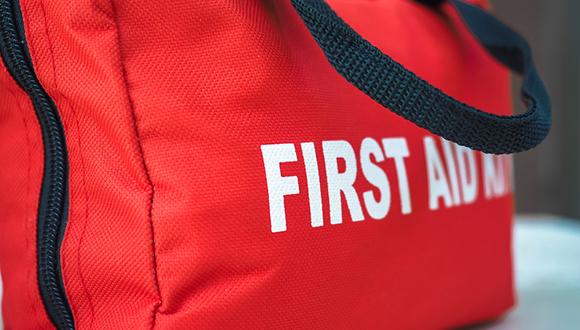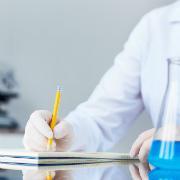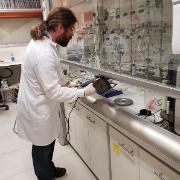First Aid in Chemistry Laboratories
Eyes
If a chemical is splashed into your eyes, wash and rinse your eyes well in running water for at least 15 minutes. Use the eye washer in the laboratory, or a regular water tap. Make sure your eyes are open when you rinse them. After rinsing, immediately seek medical help from a doctor.
Burns
A burn is a skin injury as a result of exposure to a chemical substance or exposure to extreme temperatures. In the case of heat or cold burns (boiling water or liquid nitrogen), dip the injured place in ice water or wash in cold water. A chemical burn is caused as a result of exposure of the skin to a chemical substance such as an acid, a base or another corrosive material. In the case of a chemical burn, wash the injured place in cold water for at least 10 minutes. Do not remove a garment that is stuck to the place of the burn. Do not spread oil or place cotton wool or affix an adhesive bandage on the burn.
In the case of chemical substances, immediately seek medical help from a doctor.
Injury
If you are injured by glass or any other cause and the cut is not serious, wash the cut well in water. If the injury is accompanied by a serious blood flow, stop the blood flow with a pad, while applying pressure to the wound, and send the injured person to receive medical treatment.
Poisoning
Swallowing or inhaling a toxic substance can cause a feeling of discomfort and can reach the point of stopping breathing. If a person has stopped breathing, perform resuscitation (chest compressions). In less severe cases, immediately see a doctor accompanied by another person.
Fire
If a fire breaks out and a person’s clothes catch fire, take the injured person to the emergency shower at the entrance to the laboratory and wash them in running water. Another possibility is to use a fire extinguishing blanket.
If a fire breaks out, disconnect the electricity in the laboratory (the main switch is in the electricity closet) and the gas supply (the main gas tap is outside the laboratory, main-secondary taps are at the sides of the laboratory tables). At the same time try to put out the fire using the means available inside and outside the laboratory.
Electrocution
An electric shock can cause burns of varying degrees, and in severe cases damage to the heart muscles until breathing stops. A person who has been electrocuted is himself an electrical risk. In such a case, disconnect the electrical current in the laboratory immediately; the injured person will be treated only after he has been disconnected from the electrical current.
If the injured person is unconscious and is not breathing you must immediately call for medical help and at the same time begin resuscitation by pumping the chest (about 4 fingers below the ribcage). In the case of a burn, treat the injured person by treating the burns.
Remember:
- Before and during every experiment, strictly follow all the specific safety instructions for this experiment as written and as you have been told.
- In the event of a minor or major personal accident, inform the instructor or technician without delay.
- Report any malfunction you have identified in the laboratory (defective equipment, broken glass utensil, gas leak, defective electrical appliance, non-sealed package containing a chemical substance, or any hazard you notice).
- When you finish your work in the laboratory, clean your work table, wash the laboratory utensils, and wash your hands well.





